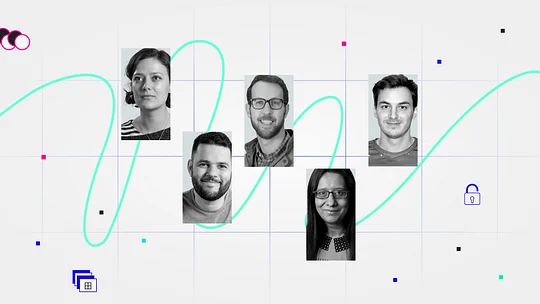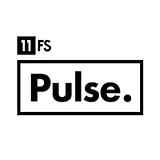Open Finance: Fact or Fantasy

When the lights went out we got some of the brightest in the industry to shine a spotlight on Open Finance for our third virtual After Dark, a live recording of our award winning Fintech Insider podcast.
Hosted by Sarah Kocianski, Head of Competitor Strategy, we were also joined by:
Adam Davis, Director of Client Services at 11:FS
Dan Kahn, Open Finance Lead at Plaid
Jack Wilson, Head of Policy and Public Affairs, TrueLayer
Nilixa Devlukia, Founder, Payments Solved
Open Finance is easily one of the most talked about topics in the financial world right now and there are some amazing opportunities within this field but also some hurdles we need to navigate.
Concerns including adequate data protection and whether or not we actually have the technical infrastructure in place to implement this sort of technology needs to be addressed before we can make any meaningful steps forward.
What’s the difference between Open Banking and Open Finance?
Jack Wilson, Head of Policy and Public Affairs at TrueLayer describes Open Banking as the beginning of Open Finance, “empowering consumers to use their banking data through third party providers such as TrueLayer and Plaid. It’s based on legislation that gives consumers and third party providers, such as fintechs, the right to access their data through dedicated APIs.”
But why is Open Banking just the beginning of Open Finance? Jack explains that “in Open Banking you can only access payment accounts, such as current accounts and credit cards. However the industry wants Open Finance to be able to give a holistic view and control of all financial affairs, extending this to savings accounts, mortgages and pensions, so ultimately you will be able to use an app and see all of your finances in one place. Additionally Open Finance would give [users] the ability to move funds between the accounts, so it’s not just about data, it’s about having the rights and the ability to initiate payments.”
“For the average consumer this means we should be able to control our financial data and share it with the parties we choose”, adds Dan Kahn, Open Finance Lead at Plaid. “All of the benefits come from placing that control in the hands of the end user, especially within the consumer and small business space. We’ve moved into a world where we got rid of paper statements that were easy and straightforward to share with a provider to show you qualify for a mortgage or a loan for example, to a digital world where it seems like the data controllers are the ones that actually own the data. But that’s wrong, it’s a quirk of history of how we made that change from paper to digital. Open Finance will move us back into a world of consumer control and ownership of data.”
Open Finance will move us back into a world of consumer control and ownership of data.
“In the US there’s demand for access to everything from investment accounts, to student loans and payroll data. Open Finance is going to be a very long term movement and different countries are at different stages when it comes to implementation and regulation.”
Nilixa Devlukia, Founder of Payments Solved adds that “many jurisdictions DO already have a plan in place for Open Finance. Australia didn’t start with Open Banking at all, they started with a consumer rights approach to say that consumers own their data and have the right to access that data. They looked far beyond financial data into open data in general. The question for all jurisdictions is what is the journey you’re going to take to get there? If we’re moving to a world of digital lives then the connectedness of your data is not just about your financial services data, there’s a bigger picture that needs to be addressed.”
What are the concerns around Open Finance?
When we talk about Open Finance there are always going to be concerns, especially around data protection. How can we ensure that the data captured by Open Finance isn’t misused? Nilixa, Payments Solved believes “we have strong consumer data rights in the UK, but as we move towards Open Finance and Open Data we need to consider how this is structured. One of the biggest challenges in this space is the onwards sharing of data. Once a firm has access to the data, we need to consider what they do next with it. There's the idea of consent, but how transparent is consent and do people know what they have consented to? The bottom line is that the data we have consented to share will be shared with another party at some point and consumers are never really going to know if they have had a data breach 2 years down the line and if that’s linked to the sharing of that data. This is a big ticket item that governments are going to have to think about going forward.”
Sarah Kocianski, Head of Competitor Strategy, 11:FS comments “there’s consumer understanding and then there's consumer control and then there is being able to hold firms accountable for where data is going, who’s got it, who had it last, and who has a copy of it… I think we agree that the customer should have the end control here. But how do you ensure that terms and conditions are easy to understand and how do people turn that access to their data off should they wish to?”
Jack, TrueLayer stated that nothing should be hidden in terms and conditions. “PSD2 asks for explicit consent which means consumers are informed about what data is being accessed, why it’s being accessed and who it’s being shared with. This needs to be transparent so consumers can make an active and informed decision about the data that they are sharing.”
But is data the biggest hurdle or are there other things out there which are more of a hurdle? Adam Davis, Director of Client Services, 11:FS thinks consent management and making that process easy to use is the most important thing to consider. “Nilixa just touched on how are we going to get consumers to see what/who they have subscribed to? I think whoever can make the subscription management a delight to use will win the day. There's a massive opportunity to be that trusted advocate on behalf of the customer, and banks are in a fantastic position to do this as historically they are extremely trusted.”
...whoever can make subscription management a delight to use will win the day.
Open Finance and financial inclusion
One of the opportunities of Open Finance is to enable consumers to make more informed decisions based on having a more holistic view of their financial situation. Does this make it easier to get advice? “Yes absolutely, the goal is to get consumers to manage their finances in a better way” says Nilixa. “However you have to consider how are you going to bring those people along who are not so engaged, how are you going to get them to see the benefit of having this snapshot view and that automated way of moving their money. I think something we haven’t touched upon is that Open Banking and Open Finance doesn’t solve financial inclusion, you’re still leaving a segment of the population behind as you go on this journey. Open Finance is all done on the premise of digital inclusion.”
“There is an opportunity for financial inclusion” says Adam Davis. “If you look at credit decisions, financial access and the decisions that are made by treasury teams and risk departments at banks, the amalgamation of data you get from Open Banking helps those decisions. If you’re an immigrant for example who has come to the UK you could get access to a financial product 10x quicker than previously just from the way that you spend. You have a neobank you can sign up to, such as a Monzo or a Starling, and you can start feeding your transactions, how much you earn etc, to that credit provider... While it’s not necessarily financial inclusion for people who don’t bank, it’s financial inclusion in terms of opening up new financial products for those who previously just couldn’t get them.”
What are the benefits for small businesses?
“There is an idea that consumers have to seek out Open Finance, but what I think is more likely is that Open Finance will be built into life events” said Jack, TrueLayer. “When someone wants to buy a car they will be able to plug into their accounts and get a decision really quickly based on affordability, same with buying a house, they will just plug into Open Finance and a decision will be made on a mortgage without the paperwork and faffing about. It’s going to free up a lot of admin for businesses, which is great for small businesses. All of this can be done much more efficiently via access to APIs, so it’s all about streamlining and efficiency.”
Open Finance will be built into life events.
In summary should we be excited about Open Finance?
Dan Kahn, Open Finance Lead at Plaid- “100% yes [we should be excited]... we are just in the early days, there’s so much more that can and will be built, and so much collaboration to come, to make where we are now seem like a blip, compared to where we will be in 5-10years.”
Nilixa Devlukia, Founder, Payments Solved- “Yes but on the basis that we build it right. With consumer outcomes in mind, with the right protections in place, with a view of how it’s going to work in the future.”
Jack Wilson, Head of Policy and Public Affairs, TrueLayer- “I’m excited but impatient. There’s been delays already with Open Finance and now we’re looking at enabling legislation from the Department of Business way out in 2022. I think there are some things that need to be done to keep the lights on between now and then to keep the momentum going. Things like enabling various recurring payments so that Open Banking providers can compete better with cards and in ecommerce. All of these things can be done, it has been investigated and thought through, it just needs a final push from regulators and the government.”
Adam Davis, Director of Client Services at 11:FS- I’m excited. I think variable recurring payments is a classic example of you can’t get too excited yet because it does take time. I think holistically this starts with the connected bank account, I think this will change the current account forever in terms of what it means, what it shows, who it integrates with and how proactive other companies can be with tailoring products for you. I think it will become a seamless experience for people in the likes of which we don’t know at the moment and I see this as the foundation of technology for the next 20 years, maybe more…
You can watch the full Fintech Insider After Dark here.

